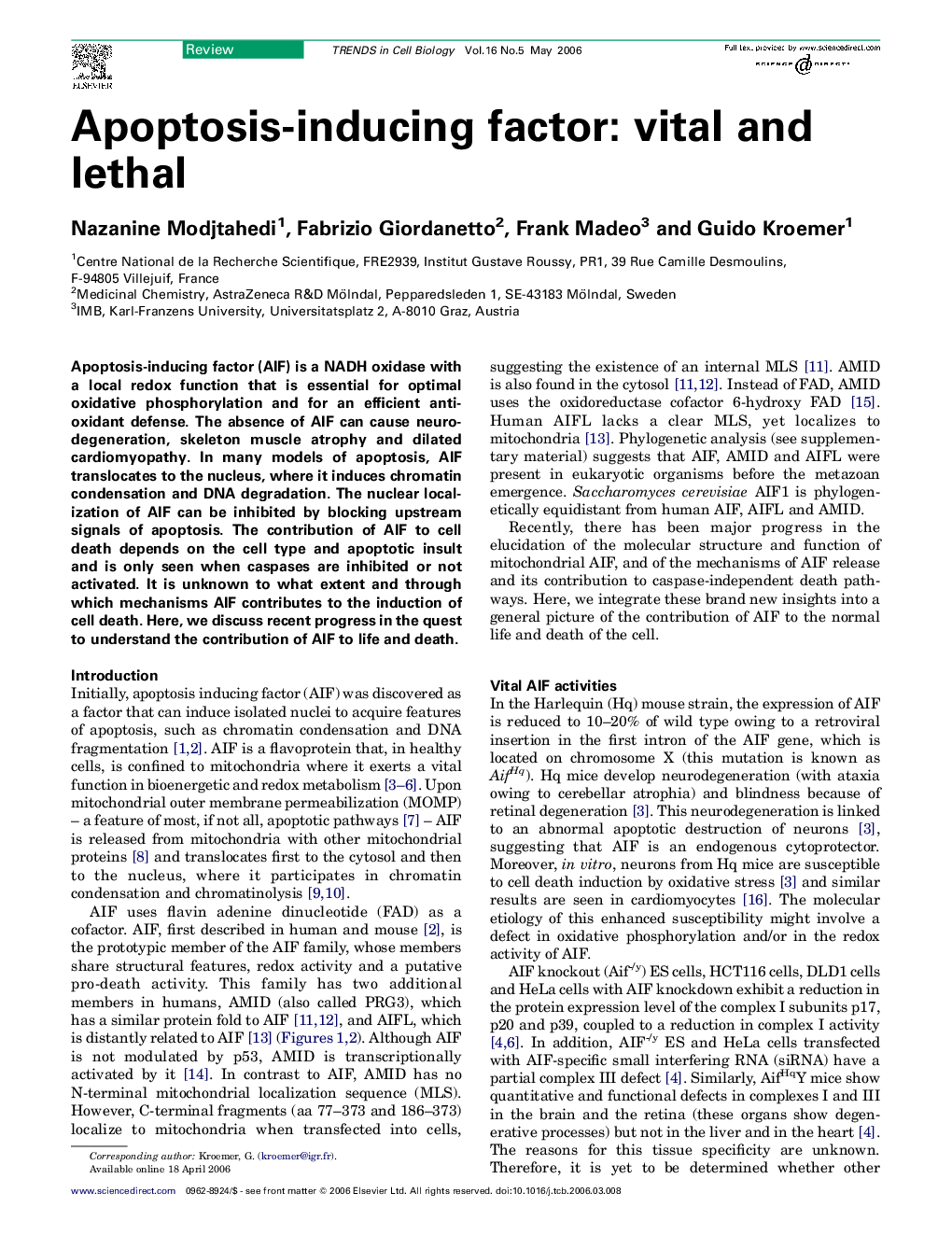| Article ID | Journal | Published Year | Pages | File Type |
|---|---|---|---|---|
| 2205168 | Trends in Cell Biology | 2006 | 9 Pages |
Apoptosis-inducing factor (AIF) is a NADH oxidase with a local redox function that is essential for optimal oxidative phosphorylation and for an efficient anti-oxidant defense. The absence of AIF can cause neurodegeneration, skeleton muscle atrophy and dilated cardiomyopathy. In many models of apoptosis, AIF translocates to the nucleus, where it induces chromatin condensation and DNA degradation. The nuclear localization of AIF can be inhibited by blocking upstream signals of apoptosis. The contribution of AIF to cell death depends on the cell type and apoptotic insult and is only seen when caspases are inhibited or not activated. It is unknown to what extent and through which mechanisms AIF contributes to the induction of cell death. Here, we discuss recent progress in the quest to understand the contribution of AIF to life and death.
